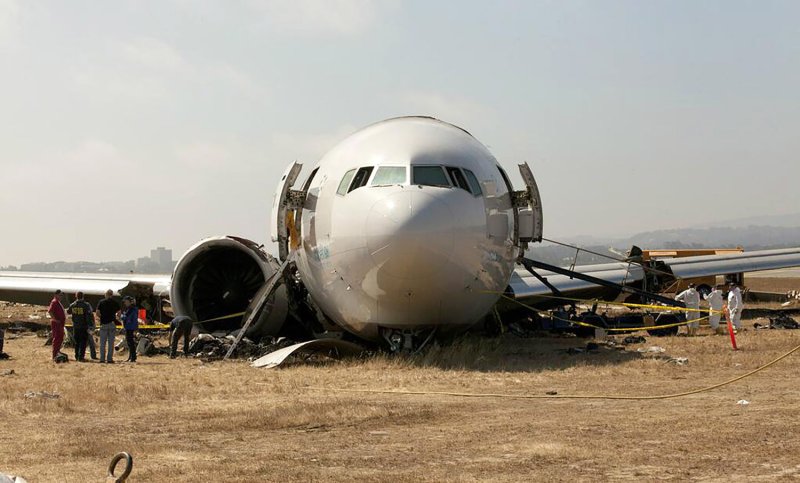1 of 4 | In this photo provided by the National Transportation Safety Board (NTSB), the nose section of Asiana Flight 214 is seen as the NTSB continues their investigation, in San Francisco, California on July 9, 2013. The Boeing 777 was en route from Shanghai with a layover in Seoul, South Korea, carrying 291 passengers. Two people died and more than 180 were injured. Pilot Lee Kang-kook had logged more than 9,000 hours on various aircraft, but only 43 hours on the Boeing 777 and was considered still in training on that aircraft. UPI |
License Photo
SAN FRANCISCO, July 10 (UPI) -- The Federal Aviation Administration Wednesday said it is increasing qualification requirements for training of first officers on passenger and cargo aircraft.
A new rule to be published by the agency would require a co-pilot -- first officer -- to hold an airline transport pilot certification requiring 1,500 total hours flying time as a pilot, the same as a captain. Under current rules, first officers only have to have a commercial pilot certificate, which requires 250 hours of flying time.
Also the final rule requires first officers of both U.S. passenger and cargo airlines to be rated for specific aircraft type, which requires additional training and testing.
"Safety will be my overriding priority as secretary," new U.S. Transportation Secretary Anthony Foxx said, "so I am especially pleased to mark my first week by announcing a rule that will help us maintain our unparalleled safety record."
While the new rules come after Saturday's crash landing of a South Korean Asiana jetliner that killed two Chinese girls and injured scores of others, the changes had been in the works since the February 2009 crash of Colgan Air 3407 near Buffalo, N.Y.
"The rule gives first officers a stronger foundation of aeronautical knowledge and experience before they fly for an air carrier," FAA Administrator Michael Huerta said.
The head of the federal agency looking into the Asiana Airlines crash Wednesday cautioned against blaming anyone, saying evidence is still being gathered.
Deborah Hersman, chief of the National Transportation Safety Board, said while the investigation continues, "we are not reaching any conclusions," CNN reported.
"We're gathering factual information," Hersman said. "We know a lot, and what we need to do is correlate all that information. We need to put it together and see what it tells us."
She said the NTSB had received "great cooperation" from the four pilots of the plane, which crashed Saturday while attempting to land at San Francisco International Airport.
Hersman said she had no reason "to believe that anything is being withheld" regarding any possible drug or alcohol use by the pilots despite the failure of investigators to take blood samples from the pilots within a few hours of the crash.
Hersman said her agency was trying to determine if that must be done for foreign pilots operating within the United States.















